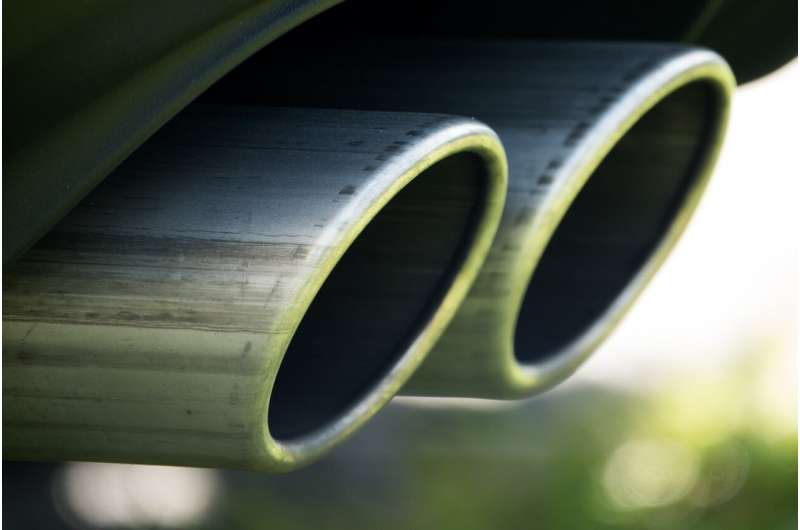This article has been reviewed according to Science X's editorial process and policies. Editors have highlighted the following attributes while ensuring the content's credibility:
fact-checked
peer-reviewed publication
trusted source
proofread
Research shows link between pollution and heart risks in residents of the city of São Paulo, Brazil

The relationship between living in a polluted city like São Paulo (Brazil) and lung disease or cancer is well known. But the problems go further. Unprecedented research shows that long-term exposure to air pollution is directly linked to increased heart risks in residents of the capital of the state of the same name. People with high blood pressure are at even greater risk.
The study, published in the journal Environmental Research, was conducted by researchers from the University of São Paulo. The research shows that cardiac fibrosis, an indicator of heart disease, is related to the duration of exposure to black carbon particles, an indicator of air pollution.
The researchers analyzed the autopsies of 238 people and epidemiological data to measure this association. They also interviewed relatives of the victims to gather information on risk factors such as a history of smoking and hypertension. From macroscopic observation of lung tissue, they determined the presence and amount of the black carbon fraction in the lungs. Myocardial samples revealed the cardiac fibrosis fraction.
The results showed a significant association between the black carbon fraction in the lungs and cardiac fibrosis in the individuals studied. This means that the longer a person is exposed to pollution, the more likely they are to develop fibrosis. "This data highlights the crucial role of autopsy in investigating the effects of the urban environment and personal habits in determining diseases," says one of the authors of the study, pathologist and USP professor Paulo Saldiva.
In addition, it was found that the risk is increased for hypertensive individuals. Among them, the presence of the heart disease marker increases with the increase in the presence of the pollution exposure indicator, both in smokers and non-smokers. Among non-hypertensive individuals, the highest risks were observed mainly among smokers.
Hypertension, or high blood pressure, is a disease that can be silent and without symptoms. According to the Brazilian Ministry of Health, the mortality rate has increased in ten years from 11.8 deaths per 100,000 inhabitants in 2011 to 18.7 in 2021. Around 60% of the country's elderly suffer from hypertension.
When hypertension is silent, pollution is not always visible. In some cases, however, it is possible to know where it is most harmful. Exposure to pollution within the same city depends on factors such as people's habits and commutes.
"We can say that there are two indicators of pollution, one measured by the CETESB [São Paulo State Environmental Corporation] network, which is objective. And another related to how much each individual is exposed to," Saldiva says. "In other words, the level of concentration of environmental pollution doesn't mean the same dose is received by everyone. If you're in a traffic corridor for hours, you receive a higher dose because the concentration of that environment is particularly higher."
Saldiva explains that various factors, such as hypertension itself, influence the development of cardiac fibrosis, and that pollution has now been shown to be one of them. "The question was, 'Is pollution big enough to show up in this photo?' It is, and it was the first time in the world that it had been demonstrated in humans. That's the difference in this work," he points out.
According to the doctor, the study was only possible thanks to the work carried out 24 hours a day, 365 days a year by the city's Death Verification Service (SVO). He says that the support of the USP Medical School and FAPESP, in agreements signed in the past with the SVO, has built up a vast body of processes and information that today lead to new scientific possibilities.
USP's research provides evidence of the impacts of air pollution on cardiovascular health and highlights the need for effective measures to reduce the population's exposure to this evil. Implementing measures such as reducing vehicle emissions, promoting sustainable public transport in the city, and promoting clean energy sources are effective strategies for mitigating the impacts of air pollution on public health.
More information: Ana Paula Cremasco Takano et al, Association of pulmonary black carbon accumulation with cardiac fibrosis in residents of Sao Paulo, Brazil, Environmental Research (2024). DOI: 10.1016/j.envres.2024.118380

















